5 Facts About Silverfish Eggs in Salt Lake City, Utah
Salt Lake City is a vibrant and diverse city that offers many attractions and activities for visitors and residents alike. From the majestic Wasatch Mountains to the historic Temple Square, there is something for everyone in this capital city. However, there is also something else that lurks in the dark corners and crevices of many homes and buildings: silverfish.
Silverfish belong to a group of primitive insects in the Order Zygentoma. They are small insects with no wings that are known for their elongated, teardrop-shaped bodies. They have shiny, silver, or grayish-blue scales, hence the name “silverfish.” Besides that, silverfish have two long antennae and three long tail-like at the rear part of their body.
Just like other common pests, silverfish can lay eggs in cracks and crevices. Their eggs are characterized by their small, oval-shaped appearance. And these eggs are one of the major concerns when you have silverfish infestations on your property. That’s why it’s important to know the facts about silverfish eggs to effectively prevent your home from silverfish egg infestation.
Found in Clusters
A silverfish can lay eggs in groups per day. A single group can consist of up to 20 eggs, and a silverfish can lay two to three groups of these per day. So, in just a day, you can be infested with 40 to 60 silverfish eggs that will later on mature as an adult and lay eggs on their own.
You might even find more than this amount because once one silverfish finds a breeding ground where it wishes to lay its eggs, it can send signals to other silverfish to lay their eggs there as well. The more silverfish eggs are laid, the more it speeds up the hatching process of the eggs. This is because the temperature will change, and the humidity may increase, which is an ideal environment for these eggs.
When that happens, they will hatch after two and a half weeks. However, the longest time for them to hatch is up to 32 days.
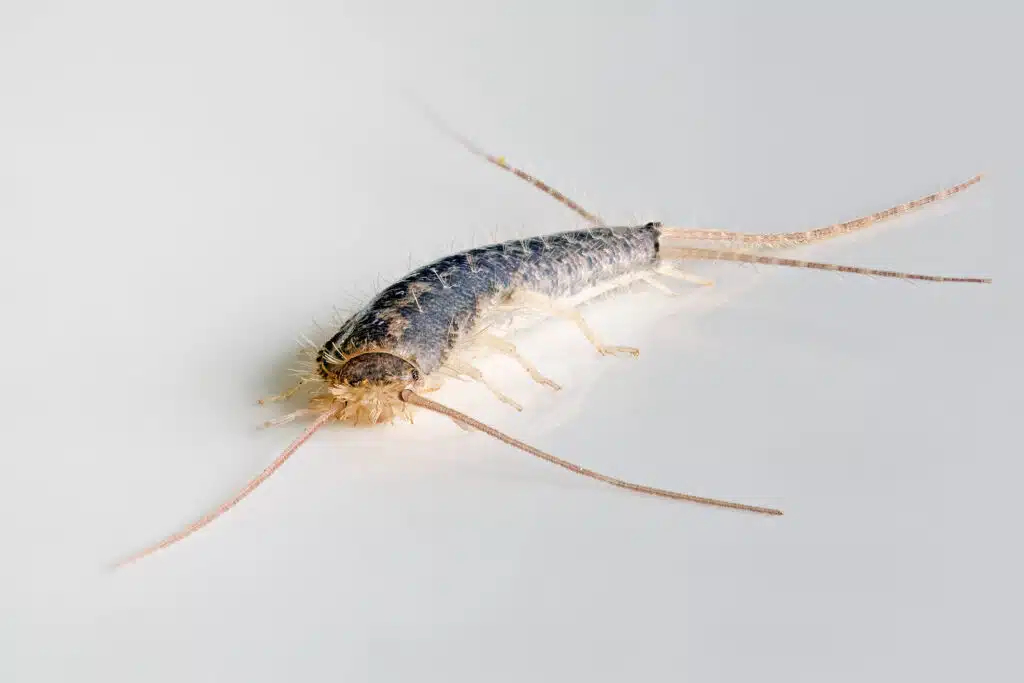
Color and Texture Changes of Silverfish
When discussing silverfish eggs, it’s fascinating to note the changes they undergo as they develop. Silverfish eggs are initially soft and white, but they harden and turn yellowish as they age. This transformation is crucial for their survival, as the hardening of the eggs protects them from environmental hazards and predators.
As for the silverfish themselves, they experience significant changes in color and texture throughout their life cycle. Nymphs, or young silverfish, are white when they hatch and gradually develop their distinctive silver-grey coloration as they mature. This color change is accompanied by the development of a metallic sheen, which is where the name “silverfish” originates. The texture of their bodies also evolves, becoming covered with tiny scales that give them a slippery feel.
Neatly Hidden
Female silverfish will do anything to protect their eggs. That’s why silverfish eggs are very hard to see. Besides their small body, they are neatly tucked inside the cracks, holes, and crevices in your home. That is also the reason why it’s hard to get rid of silverfish eggs on your own. Not only is it very hard to locate, but vacuums or brooms cannot reach them if located. Silverfish eggs can also be hidden in dust, cloth, drawers, cabinets, paper, and even food.
Washing Clothes Can Get Rid Of Them
As mentioned above, female silverfish can lay their eggs on clothes. And the best way to get rid of them is to wash your clothes. Just like bed bugs, silverfish eggs on clothes are killed when the clothes are washed at the hottest temperature possible.
How to Get Rid of Silverfish and Its Eggs?
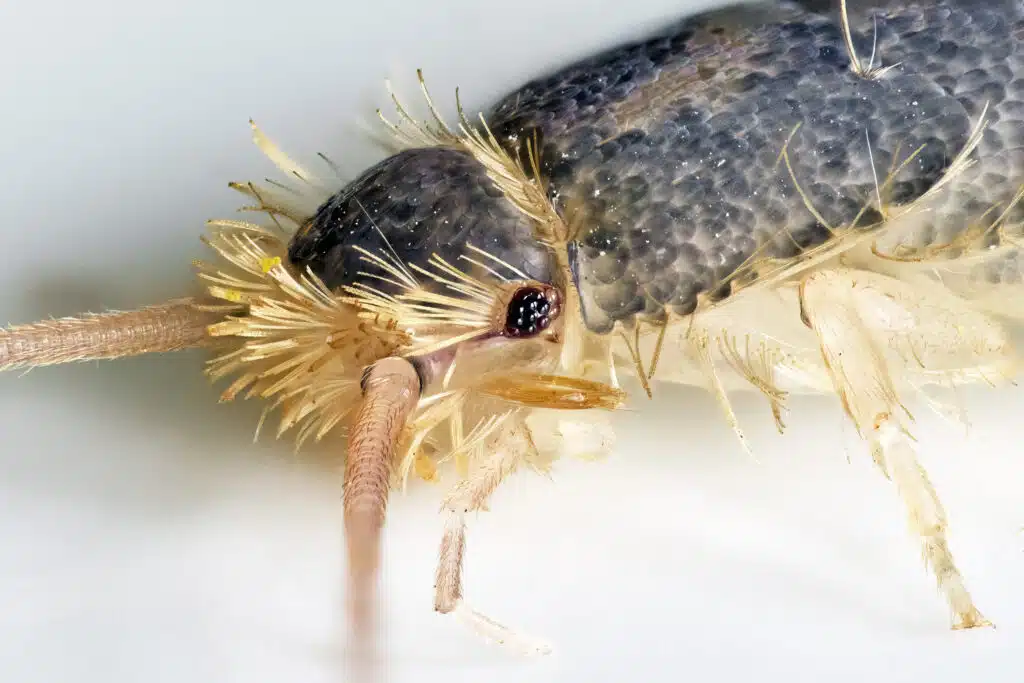
Besides washing your clothes, preventing silverfish from getting inside your home is the number one key to avoiding infestation. Using caulk on cracks and crevices not only prevents the silverfish itself but also eliminates the breeding ground of the silverfish. Getting rid of all possible hiding places will also help prevent silverfish eggs from laying their eggs in the first place. Therefore, decluttering is essential.
Additionally, store your clothes, paper, and books properly. This includes putting them in storage boxes wherein silverfish can reach them and lay their eggs. Silverfish feed on paper and even the glue on paper and books. This explains why silverfish eggs can also be found on papers and books.
If all else fails or for faster elimination of silverfish infestation, hire a professional pest control in Salt Lake, Utah. With the help of a silverfish exterminator, you can easily locate silverfish and their eggs in no time. And when you do, rest assured that your property will become silverfish-free!
Related Articles
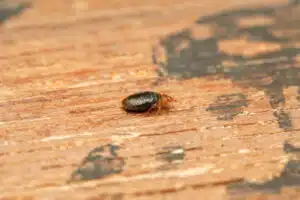
Tick vs. Bed Bugs: Differences and Similarities
Understanding the differences between two common blood-sucking pests, ticks and bed bugs, is important. We want to make sure you know exactly what kind of pests you’re dealing with,
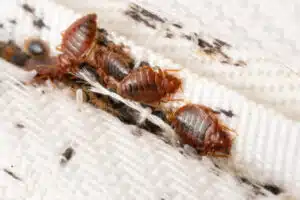
Where Do Bed Bugs Come From, and How to Prevent Them? A Guide for Salt Lake Residents
Bed bugs can be a major nuisance and cause various physical and emotional problems, including skin irritation, anxiety, and sleep disturbances. In Salt Lake City, bed bugs are a growing concern, especially in apartment buildings, hotels, and other high-density living spaces. But where do bed bugs come from, and how can you prevent them from infesting your home or property?
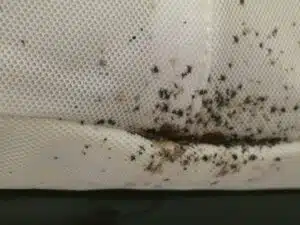
Are All the Tiny Black Bugs in My Bed Bed Bugs?
Sleeping is one of the things that we look forward to after a very long day. We recharge ourselves by sleeping by the end of the night to be refreshed the next day. But we can be disturbed even during our sleep by pesky pests crawling and hiding where we sleep. That’s terrifying, right? Pests that are known to annoy us during our sleep are bed bugs. They are usually found where humans and other pets sleep. Bed bugs can be almost anywhere in the world – even in your Saltlake home! They can be annoying because they suck your blood and leave you with an itch and bumps in the infected area. So blood attracts them, even the blood of other animals. Therefore, you should conduct bed bug removal if you have them. If you find bugs on your beds, you might think they are bed bugs. But are they?

Can Bed Bugs Live in Your Car?
Bed bugs are small, flat, and oval-shaped insects that feed on the blood of humans and animals. During the day, bed bugs hide in cracks and crevices around beds, furniture, and baseboards. You can also find them in mattresses, bed frames, blankets, carpets, and other fabric items throughout your home. While it is possible for bed bugs to infest your car, they’re less likely to do so than inside a house or other structure.
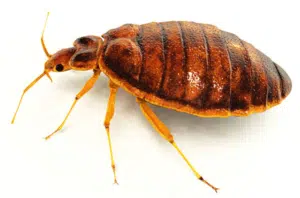
How to Find Bed Bugs in Your Home
Bed bugs are small, blood-sucking that feed on human and animal blood. They belong to the family Cimicidae, contain over 100 species, and have been around for millions of years.

Can Bed Bugs Jump?
Bed bugs are a common household pest that can be difficult to get rid of. These tiny insects can live in any crevice or crack in your home and feed on blood.
